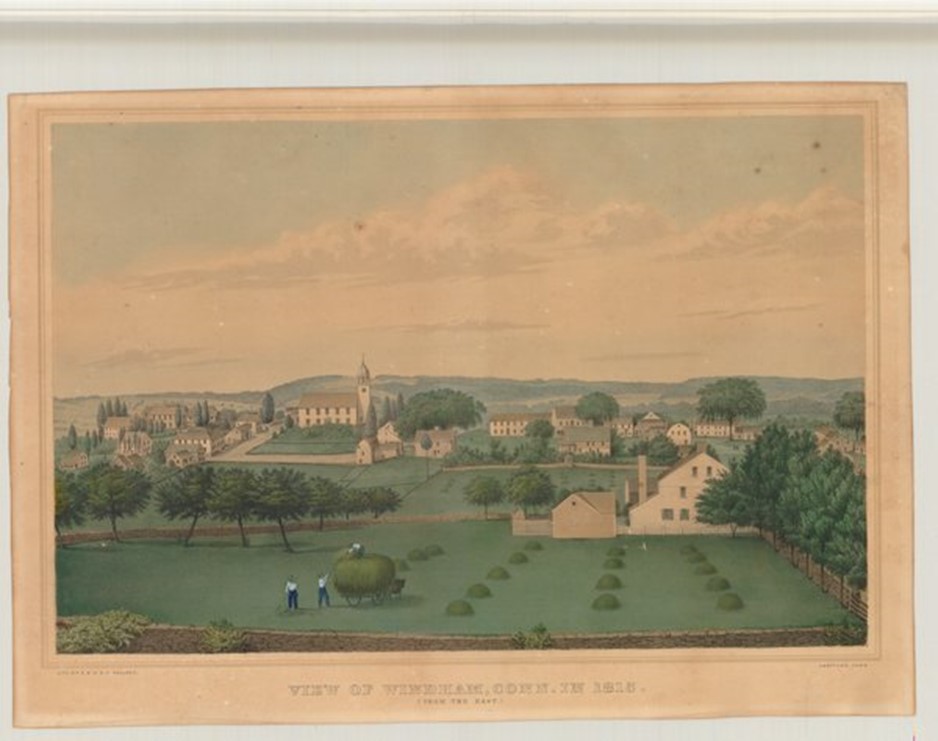Tapping the Scales of Justice - A Dose of Connecticut Legal History

Courtesy of the Connecticut Historical Society.1
After studying law and being admitted to the Bar, Zephaniah Swift held numerous legislative positions in both the Connecticut and Federal governments. It was during these years that Swift earned his reputation as "the pioneer in the development of an American common law distinct from England."2 By writing the first legal text in America, A System of the Laws of the State of Connecticut in 1795-1796, Swift himself noted in the introduction:
- "A common law peculiar to ourselves, resulting from our local circumstances, has been established by the decision of our courts, but has never been committed to writing."3
Swift was appointed a Superior Court judge in 1801 and served on the Supreme Court of Errors beginning in 1807, when the politicians were removed from the Court. In 1810 he wrote the first American treatise on the law of evidence,4 A Digest of the Law of Evidence in Civil and Criminal Cases. In his last four years of service, 1816-1819, Swift was appointed Chief Justice.
Since the Revolutionary War and continuing through Swift's tenure as a judge, Connecticut's form of government provided for the General Assembly's review of judicial decisions. One of Swift's most notable cases was the trial of Peter Lung for the murder of his wife in 1815. Swift convened a special court and presided over the case with two other judges. Lung was ultimately convicted and sentenced to death. Lung petitioned the General Assembly claiming that the proceeding was improper and the General Assembly ordered a new trial after vacating the conviction. Lung was convicted again and ultimately hanged. The decision in Lung's case, 1 Conn. 428 (1815), offended the judges and prompted Swift to write a pamphlet in 1816 about legislative review of judicial decisions:
- "We should be thrown afloat on the wide ocean of uncertainty, without a compass to direct our course. The legislature would become one great arbitration, that would engulph all the courts of law, and sovereign discretion would be the only rule of decision...."5
Swift was appointed as a delegate to the 1818 Constitutional Convention and the Constitution that was adopted formally distributed the powers of the government into three distinct branches, finally establishing an independent judiciary. The Constitution also created unlimited tenure for judges to age 70, who prior to this were elected annually by the General Assembly.
An unfortunate outcome of the 1818 Constitution was a reduction in the size of the combined Supreme and Superior Courts from nine to five justices and Swift lost his office. This removal from the judiciary, however, gave Swift the time to work on the last two major legal literary contributions of his lifetime. The first was by appointment of the General Assembly in 1820 to a three-member commission to reorganize the statutes of Connecticut. A revision of the General Statutes had not been done since 1808. Swift was the leading contributor to this effort and the author of the preface. The Statute Laws of the State of Connecticut Revised in 1821 "....is generally considered the most reliable statutory guide to the thinking of the founding fathers in 1818."6
The final work of Swift's lifetime, A Digest of the Laws of the State of Connecticut, was published in two volumes in 1822-1823. As Honorable Patrick B. O'Sullivan stated:
- "Swift's reputation as a legal writer rests, however, on his Digest. It is not a Connecticut but an American Blackstone for it covered the law generally and was almost as applicable to the other states as it was to his own. Undoubtedly this was the reason why the Digest was used to a considerable extent throughout the States mainly for legal instruction but occasionally as an authority cited to and by the courts."7
The second volume of the Digest was still in press when Swift suddenly passed away while visiting his son in Warren, Ohio in 1823. He is buried in the village cemetery on the bank of the Mahoning River.
Other Sources:
Horton, Wesley, The History of the Connecticut Supreme Court. Thomson West, 2008
Lewis, Leon P., "The Development of a Common Law System in Connecticut", 26 Conn. B.J. 419 (1953).
1 View of Windham, CT in 1815 where Zephaniah Swift lived and practiced law for 40 years.
2 Wesley Horton, "Connecticut Constitutional History 1776-1988," 64 Conn. B.J. 355, 358 (1990).
3 Zephaniah Swift, A System of the Laws of the State of Connecticut. Windham, John Byrne, for the author, 1795-1796, Vol. 1, p. 1 (1795).
4 William Draper Lewis, ed., Great American Lawyers: A History of the Legal Profession in America. Philadelphia, J.C. Winston Co, 1907-1909, Vol. II, p. 141 (1907).
5 Zephaniah Swift, A Vindication of the Calling of the Special Superior Court, at Middletown, on the 4th Tuesday of August, 1815, for the trial of Peter Lung, charged with the crime of murder. With observations on the Constitutional power of the Legislature to interfere with the Judiciary in the administration of justice. Windham, J. Byrne, 1816, p. 42.
6 Wesley Horton, The Connecticut State Constitution, 2d ed. New York, Oxford University Press, 2021, p. 24.
7 Hon. Patrick B. O'Sullivan, "Biographies of Connecticut Judges I. Zephaniah Swift," 19 Conn. B.J. 180, 192 (1945).
Doses of Connecticut Legal History